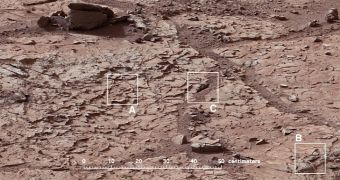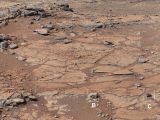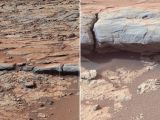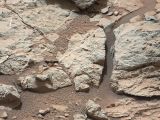Curiosity's findings are getting better and better and it has barely started to do any science. NASA has now picked a potential site to test its rock drill for the first time.
What's really interesting about the rock in question and the location is that scientists are seeing clear signs of water flowing on the surface in the area at some distant point in the past.
Curiosity's ChemCam instrument found rocks that could only have formed in the presence of water, veins of gypsum or bassinite, around the Yellowknife region it's now at.
In fact, the instrument found a change in the chemical composition of the rocks around the rover as it traveled from its landing location 700m away from its current one.
While initially the rocks were mostly silicon (sand basically), there's a much greater concentration of calcium in the region.
Curiosity is getting ready to test its drill, the first samples will be used to clean the drill and the instrument, but subsequent ones will be sent to the internal laboratory for analysis.
The rock chosen by NASA is filled with unique features, including the lightly-colored gypsum veins or the lustrous pebbles, like the one dubbed the Mars flower, spotted a while back. NASA's got more relevant photos here.

 14 DAY TRIAL //
14 DAY TRIAL // 


